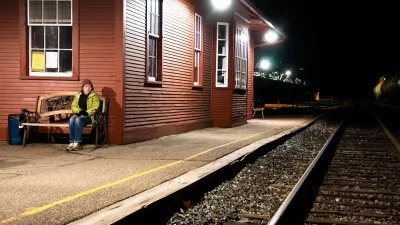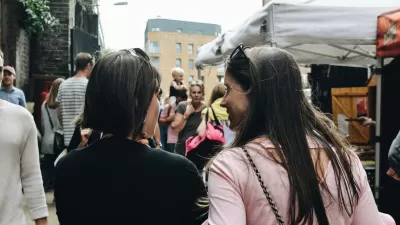Urban spaces and transportation system are largely designed and managed by men, but cities are starting to recognize the unique challenges women and children face.

In a piece in Forbes, Eva Epker argues that “cities that were designed for men’s needs and conveniences. They were not designed for women or even designed by women.”
In general, according to UN Women, almost 9 out of 10 women in cities around the world feel unsafe in public spaces – and, as Dolores Hayden argued in 1980, cities have been built, literally and figuratively, on the idea that men move into town and women stay home.
Pointing to the low number of women in the architecture and planning fields and local governments, Epker writes that “Due to this male dominance and subsequent male bias, women’s needs aren’t represented equally in either in city plans or realities: regardless of whether those women stay at home or work elsewhere.”
Epker uses examples from transportation — women are more likely to walk and have variable schedules to account for household tasks and childcare, among other things — to show how public transit and transportation infrastructure are often not geared to women’s and children’s needs.
Making cities safer and more accessible for women and children doesn’t always require massive change. In Stockholm, Sweden, where women were more likely to be injured on icy sidewalks, the city began prioritizing plowing sidewalks and cycle tracks to make conditions safer for pedestrians — “decreasing the number of accidents by 50% in the process without any extra charge to the municipality.”
FULL STORY: Cities Are Designed For Men’s Convenience - Not For Women’s Health

Planetizen Federal Action Tracker
A weekly monitor of how Trump’s orders and actions are impacting planners and planning in America.

Maui's Vacation Rental Debate Turns Ugly
Verbal attacks, misinformation campaigns and fistfights plague a high-stakes debate to convert thousands of vacation rentals into long-term housing.

Restaurant Patios Were a Pandemic Win — Why Were They so Hard to Keep?
Social distancing requirements and changes in travel patterns prompted cities to pilot new uses for street and sidewalk space. Then it got complicated.

In California Battle of Housing vs. Environment, Housing Just Won
A new state law significantly limits the power of CEQA, an environmental review law that served as a powerful tool for blocking new development.

Boulder Eliminates Parking Minimums Citywide
Officials estimate the cost of building a single underground parking space at up to $100,000.

Orange County, Florida Adopts Largest US “Sprawl Repair” Code
The ‘Orange Code’ seeks to rectify decades of sprawl-inducing, car-oriented development.
Urban Design for Planners 1: Software Tools
This six-course series explores essential urban design concepts using open source software and equips planners with the tools they need to participate fully in the urban design process.
Planning for Universal Design
Learn the tools for implementing Universal Design in planning regulations.
Heyer Gruel & Associates PA
JM Goldson LLC
Custer County Colorado
City of Camden Redevelopment Agency
City of Astoria
Transportation Research & Education Center (TREC) at Portland State University
Jefferson Parish Government
Camden Redevelopment Agency
City of Claremont





























